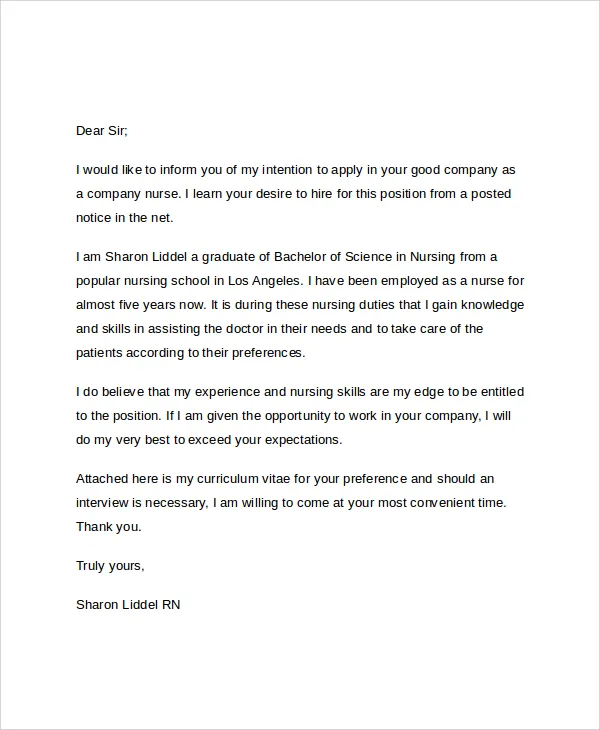The Power of a Compelling Employment Cover Letter
In today’s competitive job market, a well-crafted employment cover letter is more than just a formality it’s your first opportunity to make a lasting impression on a potential employer. This document serves as your introduction, allowing you to showcase your personality, skills, and enthusiasm for the role. Unlike a resume, a cover letter provides the space to tell your story, connecting your experiences to the specific requirements of the job and demonstrating why you are the ideal candidate. It’s a chance to move beyond a list of qualifications and highlight your unique value proposition. A strong cover letter is not just a summary of your resume; it’s a persuasive narrative that convinces the hiring manager to delve deeper into your qualifications and ultimately, invite you for an interview. A well-written cover letter significantly increases your chances of landing your dream job by setting you apart from other applicants and capturing the attention of the hiring manager.
Highlighting Your Skills and Experience
Your cover letter should act as a spotlight, illuminating your most relevant skills and experiences. Instead of simply listing your qualifications, focus on demonstrating how those skills align with the job description. Start by carefully reviewing the job posting and identifying the key requirements the employer is seeking. Then, select the experiences and skills from your background that directly address those needs. Provide specific examples of how you’ve utilized those skills to achieve positive outcomes in past roles. Quantify your achievements whenever possible. For instance, instead of saying ‘Managed social media accounts,’ you could write, ‘Increased social media engagement by 30% within six months by implementing targeted content strategies.’ This level of detail not only validates your claims but also provides tangible evidence of your capabilities. Remember to emphasize transferable skills that can be applied to the target role, even if your past experiences weren’t exactly the same. Focus on skills such as problem-solving, communication, leadership, and teamwork, as these are highly valued across various industries and roles.
Tailoring Your Letter to the Job
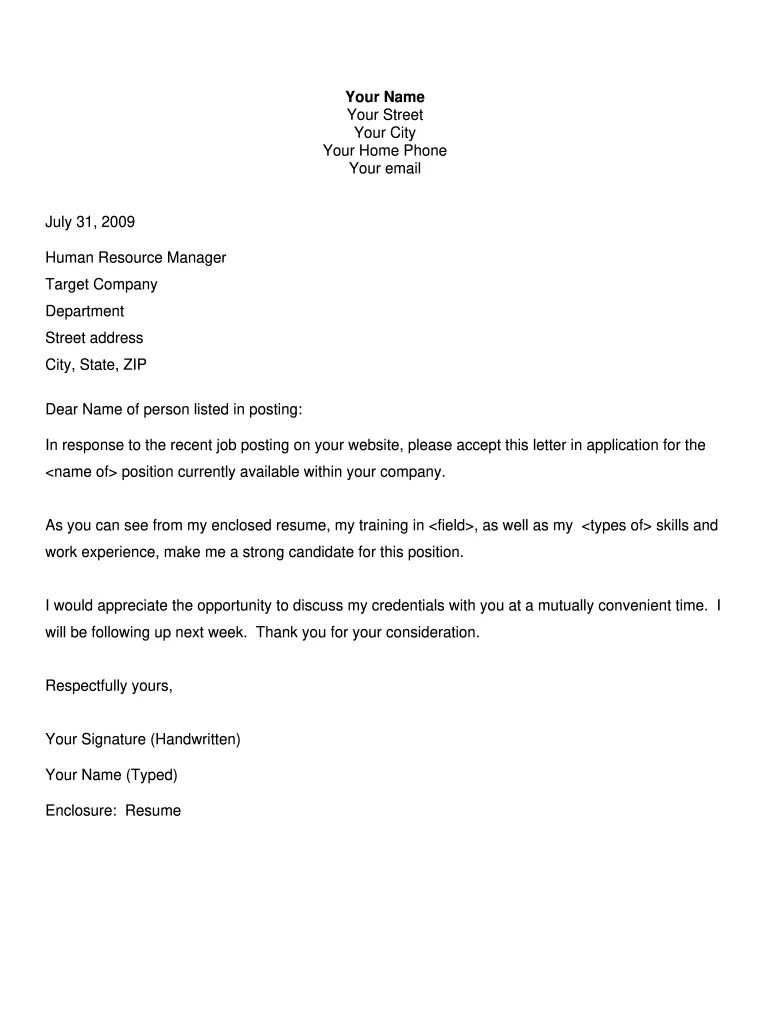
One of the biggest mistakes job seekers make is using a generic cover letter for every application. Tailoring your letter is crucial for demonstrating genuine interest and showing that you’ve taken the time to understand the role and the company. Begin by thoroughly researching the company. Understand its mission, values, and recent achievements. This knowledge will allow you to align your skills and experiences with the company’s needs and culture. When writing, use keywords and phrases from the job description to show that you meet the required qualifications. However, be authentic and don’t simply regurgitate the job posting. Instead, weave these keywords naturally into your narrative to demonstrate how your skills and experiences make you an ideal fit. Customize each cover letter to speak to the specific needs of the hiring manager. Personalize your letter by addressing the hiring manager by name (if possible), and make sure to reference specific details about the company or the role that resonate with you. This level of personalization shows that you are truly interested in the opportunity and have gone the extra mile to make your application stand out.
Researching the Company and Role
Before you even start writing, take the time to delve deep into the company’s background. Visit their website, social media profiles, and any news articles to understand their current projects, recent achievements, and company culture. This research provides valuable insights that you can then integrate into your cover letter. By understanding the company’s values, you can tailor your language to align with their mission and express your genuine interest in joining their team. Also, scrutinize the job description closely. Identify the key responsibilities, required skills, and desired qualifications. Use this information to align your skills and experiences with the role’s specific requirements. Highlight the experiences that prove your ability to perform the job duties successfully. Use specific examples of past achievements to support your claims. This could be a project you led, a problem you solved, or a skill you utilized to make an impact. Finally, try to determine the needs of the hiring manager. Does the company have any recent challenges? What are they looking to achieve in the near future? Addressing these aspects can add an extra layer of customization that sets your letter apart.
Showcasing Relevant Achievements
Instead of just listing your job duties, use your cover letter to highlight your accomplishments. Start by thinking of past roles where you demonstrated results and quantifying them. Providing hard numbers and statistics makes your achievements more impactful and shows potential employers the value you bring to the table. For example, if you improved sales figures, mention the percentage increase. If you led a project, describe the outcomes and how they benefited your company. When you use the STAR method (Situation, Task, Action, Result), you create a compelling narrative that walks the reader through your thought process and actions. Start by describing the situation, then detail the task you had to accomplish. Explain the actions you took and provide the results you achieved. This structured approach helps the hiring manager easily understand the value of your contributions. Use keywords from the job description to ensure that your accomplishments align with the company’s needs. Finally, include a short summary of your achievements at the beginning of your cover letter, and then delve into the details in the body of the document. This grabs the reader’s attention and gets them interested in learning more.
Formatting for Professionalism
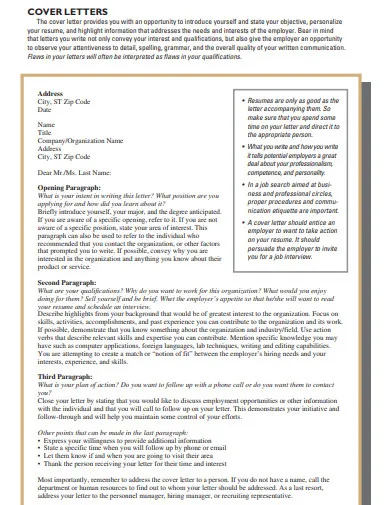
Your cover letter should look as polished and professional as possible. The format of your cover letter can greatly affect the hiring manager’s perception of your attention to detail and professionalism. A well-formatted cover letter shows that you take pride in your work and care about making a good impression. Stick to a standard business letter format. Include your contact information at the top, the date, and the hiring manager’s contact details. Use a clear and easy-to-read font such as Times New Roman, Arial, or Calibri. Use a font size between 11 and 12 points. Maintain consistent formatting throughout your cover letter. Use single-spacing within paragraphs and double-spacing between paragraphs to improve readability. Use a simple, uncluttered layout. Avoid excessive use of bolding, italics, or underlining. Break up long blocks of text with paragraphs to make it easier on the reader’s eyes. Proper formatting not only enhances readability but also demonstrates your attention to detail and professionalism. A well-formatted cover letter can make all the difference in getting your application noticed.
Choosing the Right Font and Layout
Selecting the right font and layout is key to a professional cover letter. The right font and layout can significantly impact readability and the overall impression of your application. Choose a font that is clear, legible, and easy to read. Some of the most common and recommended fonts include Times New Roman, Arial, and Calibri. Avoid overly fancy or stylized fonts that may be difficult to read or detract from your message. Make sure your margins are consistent and professional. Set the margins to at least one inch on all sides to give your document a clean and uncluttered look. Ensure your letter is well-spaced. Use single-spacing within paragraphs and double-spacing between paragraphs. This helps to break up the text and make it easier to read. Organize your content logically, using headings and subheadings to divide sections. This makes it easier for the hiring manager to scan the document and quickly find the information they need. Proper formatting enhances readability, showing that you pay attention to detail, and helps ensure that the content of your cover letter is easily understood.
Keeping it Concise and Readable
A well-written cover letter should be concise and easy to read. Hiring managers are busy people, so they typically spend a limited amount of time reviewing each application. Your cover letter should quickly capture their attention and highlight your most relevant skills and experiences. Keep your cover letter to one page. Aim for a length of approximately 250-400 words, depending on your experience. Prioritize the information to ensure you are providing the most important details about your skills and achievements. Use clear, concise language and avoid jargon or complex phrasing that might confuse the reader. Get straight to the point and focus on conveying your message effectively. Use short paragraphs and bullet points to break up large blocks of text and make it easier for the reader to scan the document. Proofread your cover letter carefully to eliminate any errors in grammar or spelling. Errors detract from your credibility and can make you look unprofessional. Make sure the structure flows logically from one paragraph to the next and tells a story.
Making a Strong Opening
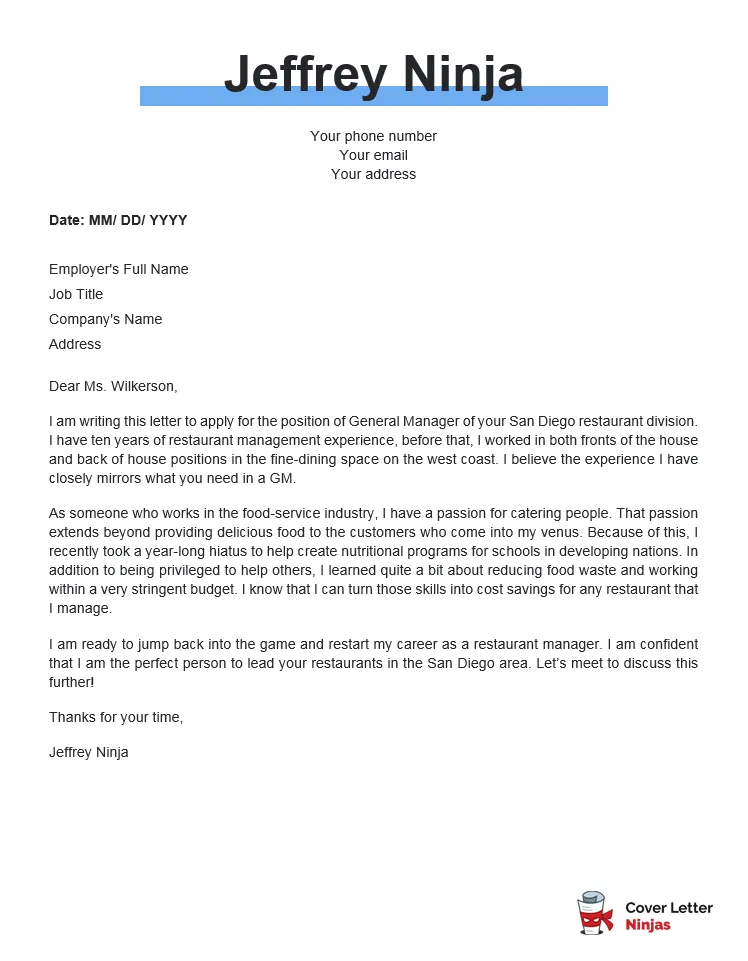
The opening of your cover letter is your first opportunity to make a strong impression. This is where you capture the hiring manager’s attention and encourage them to read the rest of your letter. The opening paragraph is crucial because it sets the tone and demonstrates your enthusiasm for the role. In the opening paragraph, immediately state the position you are applying for and how you found it. If you were referred by someone, be sure to mention their name. Then, express your genuine interest in the role and the company. Avoid generic opening lines that could be used for any job. Instead, tailor your introduction to the specific role and company. Do some research to gain an understanding of the company’s values and mention something that resonates with you. This shows that you have a genuine interest in the opportunity. This personalized approach shows that you have done your research and are serious about the opportunity.
Grabbing the Reader’s Attention Immediately
A captivating introduction is essential for making your cover letter stand out from the competition. Your goal is to hook the reader’s attention from the very first sentence, making them eager to learn more about you. One effective approach is to start with a brief anecdote or a relevant achievement that highlights your skills and experience. This could be a story about a time you solved a complex problem, exceeded expectations, or made a significant contribution to a team. Another option is to mention a recent accomplishment or a specific project that aligns with the company’s goals or the job’s requirements. Make sure to use strong, active verbs and compelling language to make your introduction memorable. Get right to the point, and demonstrate your enthusiasm. By immediately demonstrating your ability to meet the requirements of the job or to solve a problem, you can quickly capture the hiring manager’s attention and encourage them to read the rest of your letter.
Stating Your Purpose Clearly
In addition to grabbing the reader’s attention, your opening paragraph should clearly state your purpose for writing. State the position you are applying for. Be specific about the role you are interested in, referring to the job title. The opening should include a statement of your interest in the role. Demonstrate enthusiasm and express why you are excited about the opportunity. Avoid vague language or generic statements. Instead, demonstrate your specific reasons for wanting the job and express your genuine interest. If you know the name of the hiring manager, be sure to address the letter to them by name. This is a simple way to personalize your letter and show that you have taken the time to learn more about the company and the role. A clear and well-defined opening immediately establishes your purpose, setting a professional tone and showcasing your preparedness.
Closing with Confidence and a Call to Action
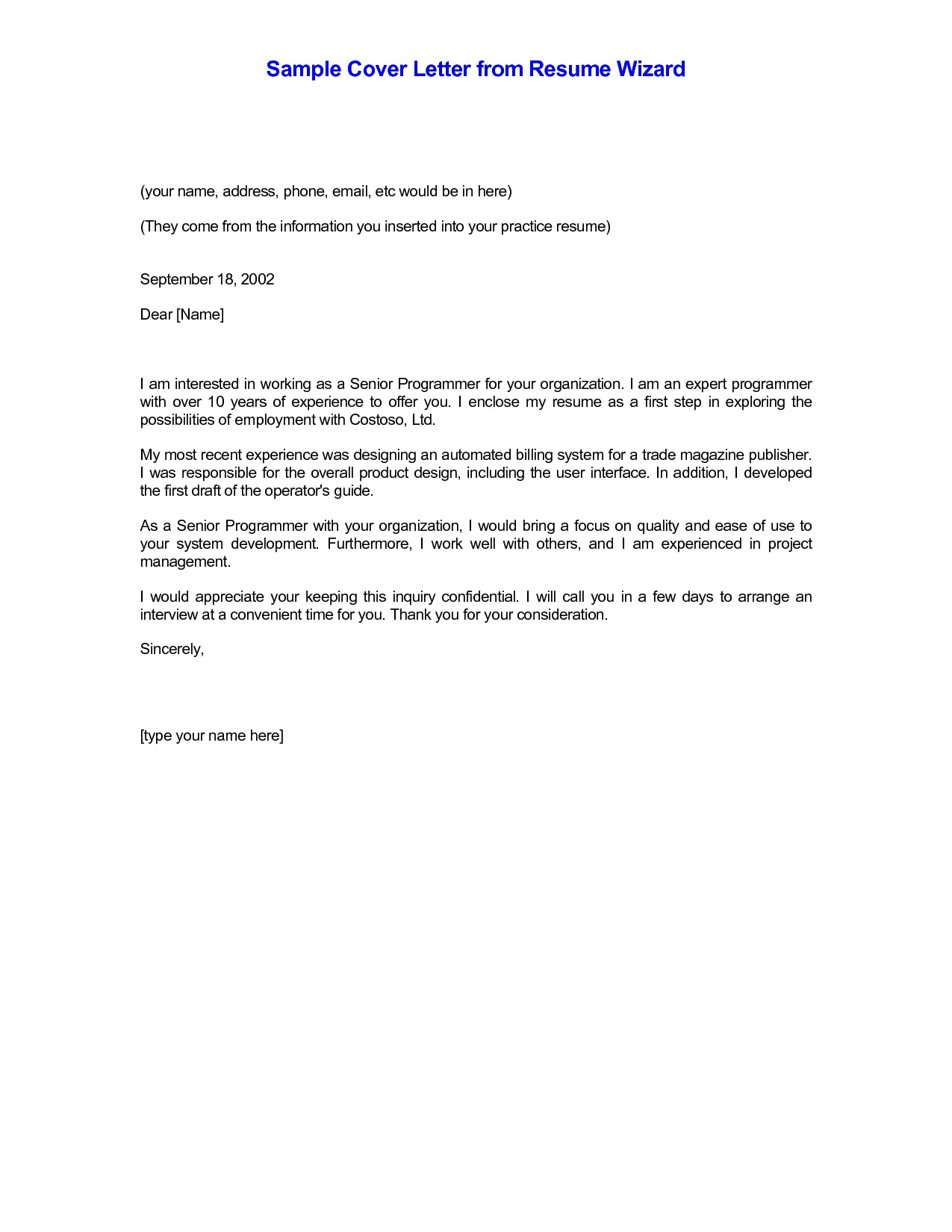
The conclusion of your cover letter is your final opportunity to leave a lasting impression. End your letter with a confident and professional closing. This is where you reiterate your interest in the position, summarize your key qualifications, and express your enthusiasm for the opportunity. Your closing should inspire the hiring manager to take the next step and invite you for an interview. Reiterate your interest in the role and express your excitement about the opportunity. Thank the hiring manager for their time and consideration, and express your gratitude for the opportunity to be considered for the position. Reiterate your value and summarize your key qualifications. Remind the hiring manager about your most relevant skills and experiences. Finally, include a clear call to action. Let the hiring manager know that you are eager to learn more and request an interview to discuss your qualifications in greater detail.
Expressing Enthusiasm and Gratitude
Your closing paragraph should express your enthusiasm and gratitude. Demonstrate your genuine interest in the role and express why you are excited about the opportunity. Use strong and positive language to communicate your excitement. Be specific and tailor your closing statement to the company and the role. Show the hiring manager why you are excited about the specific job. Express your gratitude for the hiring manager’s time and consideration. Thank them for considering your application and for the opportunity to learn more about the position. Include a polite and professional closing salutation. Close with a professional closing salutation such as ‘Sincerely,’ or ‘Best regards,’ followed by your name. A strong and professional closing can make a great final impression and is a critical part of the application process.
Following Up After Submission
After submitting your cover letter and resume, it’s crucial to follow up. Following up demonstrates your continued interest in the position and allows you to reiterate your qualifications. Send a follow-up email within one or two weeks after submitting your application. Keep the email concise. Remind the hiring manager of your application and the position you applied for. Reiterate your enthusiasm for the role and reiterate your qualifications. Thank the hiring manager for their time and consideration. Express your interest in hearing from them and your availability for an interview. Following up with the hiring manager gives you an opportunity to build a relationship and allows you to ensure that your application was received.
Proofreading and Editing for Perfection
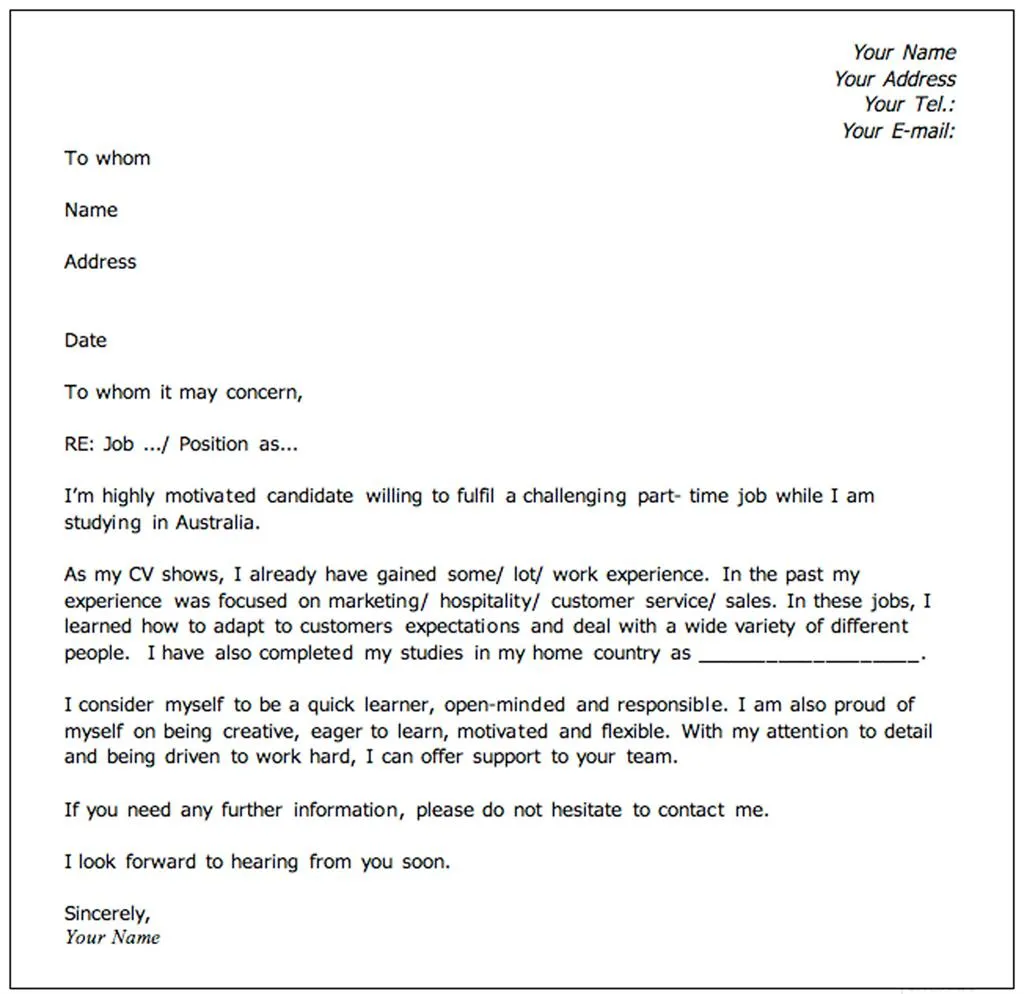
Before you send your cover letter, ensure that it is completely free of any errors. Thorough proofreading is crucial to avoid grammatical errors, typos, and formatting inconsistencies. Even small mistakes can detract from your professionalism and make you appear careless. To thoroughly check your document, print it out and read it carefully. Sometimes you’ll catch errors when you see the document printed out. Read it aloud, slowly and carefully, to catch any awkward phrasing or missing words. Make sure to check for grammatical errors, spelling mistakes, and punctuation issues. Have someone else review your cover letter. Another pair of eyes can often catch errors that you may have missed. Asking a friend, family member, or career counselor to review your cover letter can provide valuable feedback and help you identify any areas for improvement. Use spell check and grammar check tools, but don’t rely on them entirely. These tools can be helpful, but they are not foolproof and may not catch all errors. A well-proofread cover letter presents you in the best possible light, and demonstrates your attention to detail, professionalism, and respect for the hiring manager’s time.
Checking for Grammatical Errors and Typos
Grammatical errors and typos can damage your credibility and make you look unprofessional. Reviewing for these errors is critical. Proofread your cover letter carefully to identify any grammatical errors, such as incorrect verb tenses, subject-verb agreement issues, or incorrect use of pronouns. Scan for typos, or spelling mistakes, which can easily occur. Make sure your punctuation is correct, including commas, periods, semicolons, and apostrophes. Ensure the formatting is consistent and professional. Use online grammar and spell checkers to help catch errors, but don’t rely on them completely. These tools can assist in identifying potential issues, but they cannot replace the human eye. Read your cover letter aloud to catch errors you might miss when reading silently. Reading aloud helps you hear how the words sound, making it easier to identify awkward phrasing or missing words. Having a second person review your cover letter is a highly valuable step in the process. Another set of eyes can often identify errors that you may have missed. A clean, well-edited cover letter demonstrates your attention to detail and professionalism and will significantly improve your chances of getting an interview.
Ensuring a Polished Final Product
A polished cover letter is the last step in the process. Make sure that your cover letter is formatted correctly. Ensure that your font choice is professional and that the formatting is consistent throughout the document. Ensure that your contact information is accurate and up-to-date. The most important thing is to verify that your cover letter is tailored to the job description. Carefully review the job posting and ensure that your cover letter highlights the most relevant skills and experiences. Ensure that your cover letter is a clear and concise representation of your qualifications. The tone and language should be professional and enthusiastic. Double-check everything, from the opening paragraph to the closing salutation. Make sure your cover letter is free of errors and reflects your professionalism. A well-polished cover letter presents you in the best possible light. A well-written cover letter demonstrates your attention to detail and professionalism and increases your chances of getting an interview.
